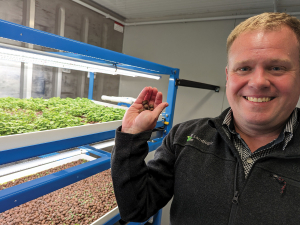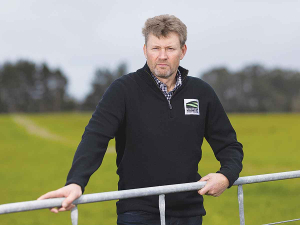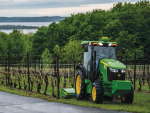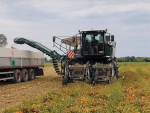That's the view of the New Zealand supplier of an Australian automated indoor growing system. The Vertical Farm Systems XA Series is a modular system designed for warehouse installation with plants grown in multilevel trays contained in climate and light-controlled cells.
It is heavily automated with computer-controlled feeding, watering and lighting, with sensors monitoring temperature, pH and gas levels. Loading, harvesting, recovery of the growing medium and reloading the trays is also automated.
The New Zealand distributor, Landlogic, showed off a small display and test-bench system at the recent South Island Agricultural Field Days, growing rocket.
Landlogic boss Alan Cottington says the XA range is designed for leafy greens - such as loose leaf lettuce, baby spinach, rocket, coriander, parsley and microgreens.
A typical growing cycle is 28 days, or six days for microgreens.
Cottington describes it as basically a hydroponic system, which can also use organic bioponics. He says the system is “just about 100%” automated.
“You literally just have to have somebody there on the computer system clicking a few buttons,” he told Hort News.
A three-cell system currently running in Australia is producing around 600kg of greens a week.
“And it takes less than three hours labour a week to run that farm.”
Cottington says human labour is little more than checking the nutrient levels and topping up nutrient tanks.
“We have an automated packaging machine as well. It’s packing those bags into boxes and distributing them out to clients.”
While it can be used with single use growing media such as peat moss, it’s optimised for clay pebbles, as used in the SIAFD display. Cottington says the pebbles retain a lot of nutrients as well as 2 million beneficial live microbes in each pebble.
The clay pebbles can be reused for 12 months.
“We have a patented additive that goes in there that allows us to actually reuse it.”
Because the pebbles are reused it avoids having to bring fresh soil or other media into the farm with the risk of introducing pests and disease. The pebbles also make for easy automation because the machinery automatically empties each tray, separates the crop from the pebbles, washes the tray then refills and replants it.
Cottington reckons the system on display at SIAFD will allow growers to test plant varieties and tweak the settings before going full-size. He knows of only two similar systems already operating in New Zealand, but without Vertical Farm Systems’ level of automation. The enclosed “cells” also give far easier and more efficient climate and lighting control, compared with any open warehouse system.
“The technology for New Zealand is very, very new,” he told Hort News.
D&E Goes Vertical
LandLogic is the importer and distributor for New Zealand and the Pacific, as well as sales agent for the rest of the world – except Canada and Scandinavia.
The company is a subsidiary of Ashburton-based agricultural machinery and services company Drummond and Etheridge, whose managing director Mark Etheridge hopes to have the first commercial Vertical Farm Systems installation up and running before the end of the year.
Mark Etheridge told Hort News his system will consist of a single climate cell of 56 trays. The building to house it is now under construction near the D&E headquarters.
“This is just a project that I wanted to do, once I retired as CEO of D&Es. So we’ve invested in a single cell which is going to be put up in Ashburton. It’s probably going to produce about 100kg of leafy greens a week.”
“The idea was to have something not only for us to produce, but also to have something that people can go and have a look at, and to demonstrate what can be done, and hopefully sell some units,” says Etheridge.
“November is when we should be pushing produce out.”
Meanwhile, Queensland-based Vertical Farm Systems also produces its XF system, optimised to produce animal fodder. It effectively converts 1kg of barley grain into 7kg of highly digestible fodder, which can be fed to animals as a mat, roots and all.
The system runs on a six-day cycle with systems capable of either one or two tonnes a day.
















